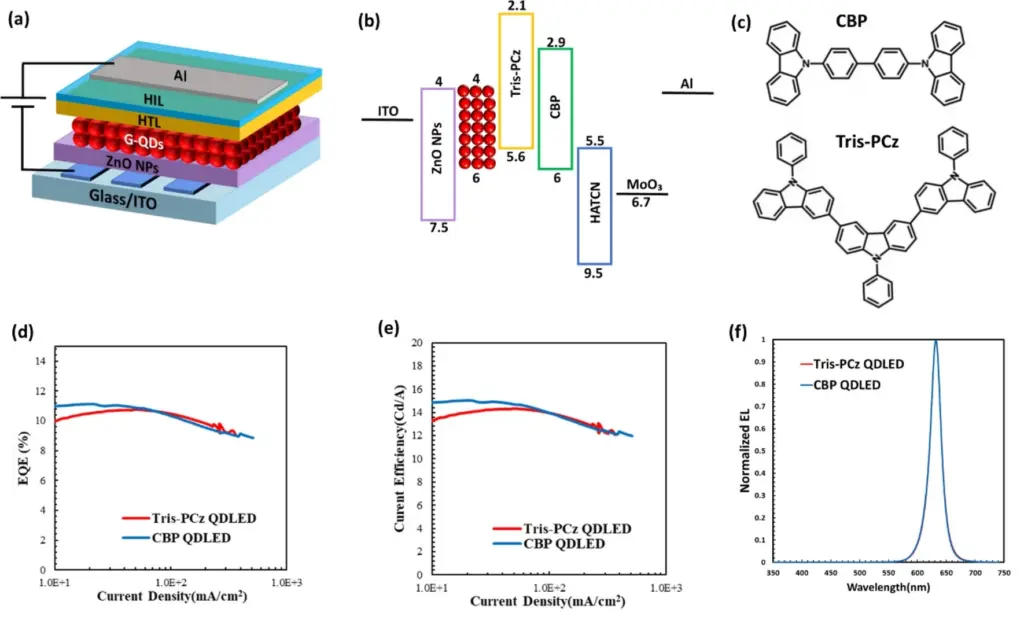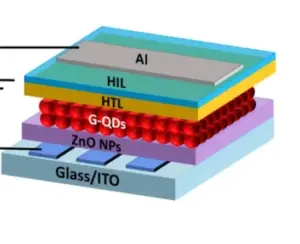Researchers at the University of Waterloo have demonstrated a new approach to significantly enhance the lifetime and stability of quantum dot LED (QDLED) displays by optimizing the hole transport layer (HTL) in the devices.

QDLEDs are emerging as next-generation display technology due to their ability to precisely tune color emission. However, the lifetime of QDLED displays still lags behind OLEDs. This is partly attributed to an imbalance in injecting electrons and holes into the quantum dots, leaving excess electrons that degrade performance over time.
In their study, researchers from the Department of Electrical and Computer Engineering and Waterloo Institute for Nanotechnology in Australia explored using an engineered organic molecule called Tris-PCz as the HTL instead of the conventional material CBP. Tris-PCz has a higher LUMO (lowest unoccupied molecular orbital – a measure of the electron transport barrier) energy level which acts as a barrier to prevent electron overflow from the quantum dots into the HTL.
This electron-blocking property also causes accumulation of electrons at the quantum dot/HTL interface. Interestingly, the researchers found this actually assists in improving the injection of holes from the HTL into the quantum dots, leading to better charge balance.
Confined recombination in the quantum dot layer is known to enhance efficiency and stability. When tested in QDLED devices, those with the Tris-PCz HTL demonstrated a 20-fold increase in lifetime compared to devices with CBP HTL.
“This work really highlights the crucial role of HTL engineering and design in achieving stable and efficient QDLEDs,” said Dr. Fatemeh Samaeifar, the lead on the study. “With our approach, we could realize a lifetime of over 160,000 hours at a practical brightness for displays, which is a major leap forward.”
According to the researchers, the findings pave the way for continued optimization of QDLED components to unlock the full potential of quantum dot displays in terms of color quality, efficiency and longevity. Their design strategy could also be applied to further improve the performance of emerging technologies like perovskite LEDs.
Reference
Samaeifar, F., Azadinia, M. & Aziz, H. Lifetime enhancement in QDLEDs via an electron-blocking hole transport layer. Sci Rep 13, 18698 (2023). https://doi.org/10.1038/s41598-023-45907-5

